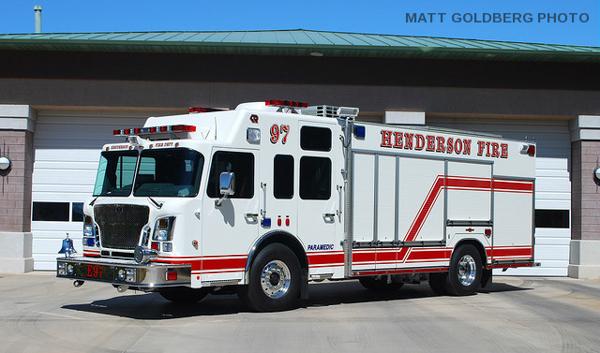Swift Action by Henderson Fire Department Prevents Injuries in School Bus Engine Fire
Early Wednesday morning,the Henderson Fire Department responded rapidly to a fire that ignited in the engine compartment of a school bus shortly after departing from a local elementary school. Thanks to the swift intervention of firefighters and the bus driver’s adherence to safety protocols, all 22 students on board were evacuated safely without any injuries. The fire was contained swiftly, minimizing disruption to the school’s transportation schedule.
- Location: Route serving Southwood Elementary School
- Response Time: Less than 7 minutes from emergency call
- Passengers: 22 students evacuated safely
- Preliminary Cause: Suspected engine overheating
Officials commended the seamless coordination between the bus driver and emergency personnel, emphasizing how preparedness and strict adherence to safety measures were pivotal in avoiding injuries. The investigation into the exact cause of the fire is ongoing, while the school district has arranged choice transportation to ensure students’ routines remain uninterrupted.
| Time | Action | Result |
|---|---|---|
| 7:15 AM | Driver detects smoke,pulls over | Students evacuated promptly |
| 7:20 AM | Fire department dispatched | Rapid arrival on scene |
| 7:27 AM | Fire extinguished | No injuries reported |
Investigating the Engine Fire and Emergency Response Strategies
The fire originated in the bus’s engine compartment,with initial findings pointing to an overheating engine exacerbated by a minor fuel leak discovered during the post-incident examination. The bus driver noticed faint smoke emanating from the rear and instantly halted the vehicle, initiating emergency evacuation procedures that ensured all passengers exited safely within two minutes.
Further investigation revealed that a malfunction in the engine’s cooling system was the primary cause of the excessive heat buildup, which ignited the fire. Additionally, a cracked fuel line, undetected during routine maintenance, contributed to the blaze.
The Henderson Fire Department’s response was exemplary, arriving within three minutes of the emergency call and employing specialized foam agents designed to suppress flammable liquid fires effectively. Coordination with local law enforcement ensured the scene was secured quickly,with traffic rerouted to protect bystanders.
- Deployment of two fully equipped fire engines
- Establishment of a secure perimeter around the incident
- Use of thermal imaging cameras to identify residual heat spots
- On-site medical evaluations confirming no injuries
| Response Time | Action Taken | Outcome |
|---|---|---|
| 0 min | Driver contacts emergency services | Evacuation initiated |
| 3 min | Firefighters arrive | Fire suppression begins |
| 10 min | Fire extinguished | Situation stabilized, no injuries |
| 15 min | Safety perimeter secured | Area cleared for investigation |
School Transportation Disruptions and Authority Responses
The engine fire caused a brief interruption in the school bus service, prompting immediate action from local officials to minimize impact on students’ daily schedules. All passengers were evacuated safely, and the Henderson School District promptly communicated with parents and guardians to provide updates and reassurance.
To prevent similar incidents and maintain smooth transportation operations, authorities implemented several precautionary measures, including:
- Comprehensive inspections of all active school buses to detect mechanical faults early
- Deployment of substitute buses to cover routes affected by the incident
- Enhanced emergency response training for bus drivers to improve preparedness
- Strengthened collaboration between school transportation and local emergency services
| Measure | Status |
|---|---|
| Fleet-wide Bus Inspections | Completed for 75% of vehicles |
| Replacement Bus Deployment | In progress |
| Driver Emergency Training | Scheduled for next week |
| Fire Department Coordination | Enhanced |
Best Practices for Maintenance and Emergency Preparedness in School Bus Fleets
Ensuring the safety and dependability of school buses requires rigorous maintenance and thorough emergency preparedness.Key mechanical components such as engines, electrical wiring, and fuel systems must undergo regular inspections to prevent malfunctions that could lead to fires or other hazards.
Recommended preventative maintenance measures include:
- Daily pre-trip inspections by qualified personnel
- Engine diagnostic evaluations every 3,000 miles
- Routine checks for worn belts, hoses, and fluid leaks
- Installation and regular testing of onboard fire suppression systems
In addition to maintenance, conducting frequent emergency drills is vital. These exercises help drivers and staff become proficient in evacuation procedures and emergency communication, reducing risks during actual incidents. School districts should adopt the following protocols:
- Mandatory fire safety and emergency response training for all drivers
- Biannual evacuation drills to reinforce preparedness
- Equipping all buses with accessible fire extinguishers
- Ongoing collaboration with local fire departments to update emergency plans
| Maintenance Task | Recommended Frequency | Responsible Party |
|---|---|---|
| Engine Diagnostic Check | Every 3,000 miles | Fleet Maintenance Technician |
| Fire Extinguisher Inspection | Monthly | Bus Driver / Safety Officer |
| Emergency Drill | Twice yearly | Transportation Supervisor |
| Pre-trip Vehicle Inspection | Daily | Bus Driver |
Conclusion
The Henderson Fire Department’s rapid and effective response to the school bus engine fire was instrumental in preventing injuries and limiting damage. While investigations into the fire’s cause continue,the school district is actively providing alternative transportation to affected students. This incident underscores the vital importance of emergency preparedness, routine maintenance, and the collaborative efforts of emergency responders in safeguarding the community.
